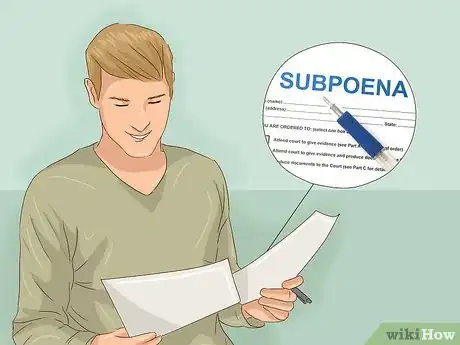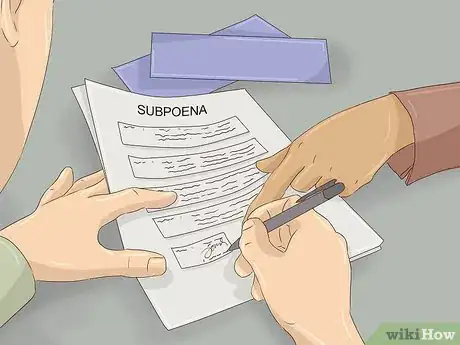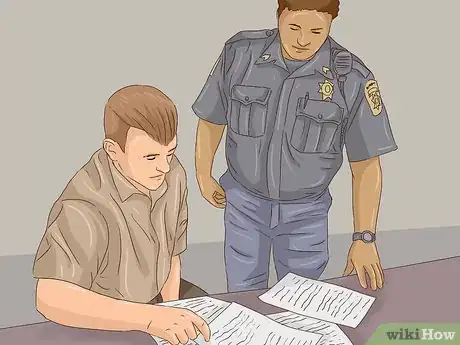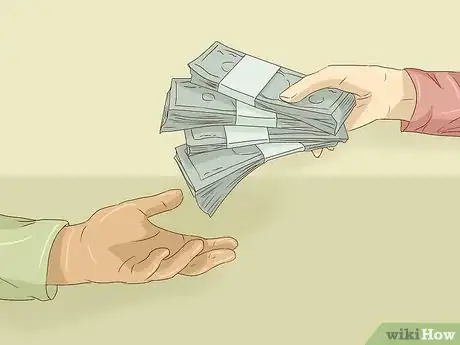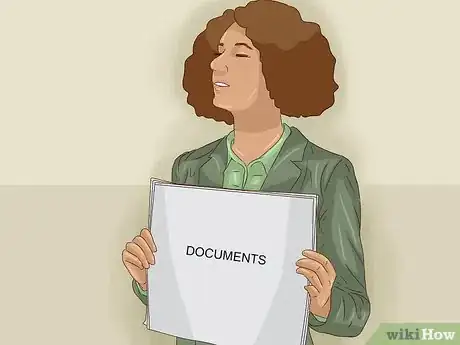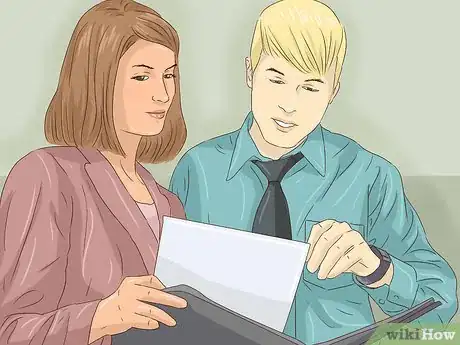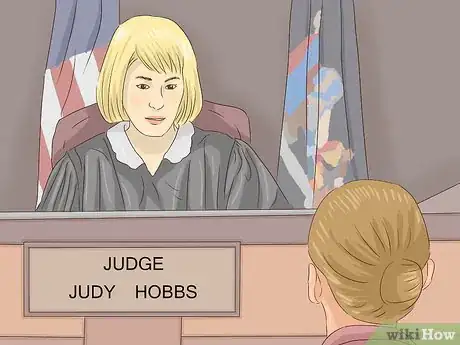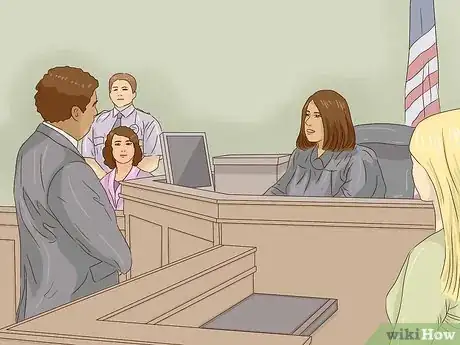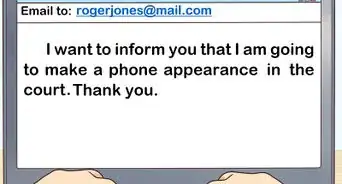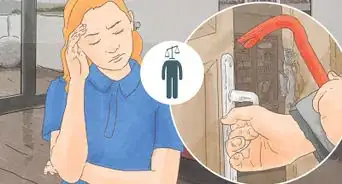This article was co-authored by Lahaina Araneta, JD. Lahaina Araneta, Esq. is an Immigration Attorney for Orange County, California with over 6 years of experience. She received her JD from Loyola Law School in 2012. In law school, she participated in the immigrant justice practicum and served as a volunteer with several nonprofit agencies.
This article has been viewed 27,819 times.
Since witnesses are critical to proving your case, you should serve a subpoena on each witness before your trial or hearing to ensure they show up. A subpoena requires that someone submit something to the court, such as testimony or documentation. It's different from a summons, which requires that someone appear in court.[1] Generally, you can get a subpoena form from the court clerk. Fill it out and follow your state’s rules for service of process. If the witness doesn’t show up to testify, you should move to enforce the subpoena, which will attach a penalty for failure to appear.
Steps
Filling Out the Subpoena
-
1Get the form. Most courts have a blank subpoena form you can fill out yourself. Check the court’s website or stop into the court and ask the clerk. Mention that you need a subpoena for a witness. There are different subpoenas if you want to request documents.
- Start the subpoena process early. You typically can’t serve a subpoena on a witness the day before you expect them to testify. Instead, you might need to give a certain amount of notice, such as two weeks or even longer. Read your state’s rules to find out how much notice to give.
-
2Complete the form. Each court requests slightly different information, but you generally will need to provide the following:
- The witness’ name and address.
- The name of the court.
- The title of the action (which is typically the names of the parties, e.g., “Smith v. Smith”).
- The type of subpoena.
- Attorney information (if you are an attorney).
- A command that they testify at a certain time and place.
Advertisement -
3Submit the subpoena to the court. Check to see if the clerk needs to sign off on the subpoena.[2] Usually, they do. You should also make a copy for your own records.
Serving the Subpoena
-
1Identify methods of service. Acceptable methods of service will vary, depending on the jurisdiction. You should read your state law on subpoenas to check. Generally, courts allow the following methods:[3]
- The sheriff might serve the subpoena.
- You can hire a process server for a fee. Check online or in the phone book. Process servers usually charge around $45-65 to make service.
- You can ask someone over 18 to hand deliver the subpoena, provided this person is not a party to the case.
- You might be able to mail the subpoena certified mail, restricted delivery. However, you will likely need to get the court's permission first.
-
2Pay your witness fees. In many jurisdictions, you need to pay the witness a fee to attend your deposition, hearing, or trial. You may also need to pay a mileage fee. Check your state law to see if this applies to your situation.
- Always have proof that you’ve made payment. For example, pay with a check and then get a copy of the canceled check.
-
3Hold onto your paperwork. You should receive proof that the subpoena was served, typically in the form of an affidavit signed by the server. Keep this paperwork, since you might need to prove to the judge that service was made. Also check whether you need to file the affidavit with the court.
-
4Provide copies to other parties. Depending on your jurisdiction, you might need to send a copy of the subpoena to all other parties to the lawsuit. For example, if you’re suing two people, then both defendants will need a copy of your subpoena.
- Check how you can send the copy to other parties. Usually, you can fax or mail it—you don’t have to personally serve it.
Enforcing the Subpoena
-
1Gather proof you served the subpoena. Find your copy of the subpoena as well as proof that service was made (typically an affidavit). Also find proof that you paid any required witness fees. You’ll need to show the judge you followed all the rules when you sent the subpoena.[4]
-
2File a contempt motion. You need to ask the judge to enforce the subpoena. Type up a short motion and an affidavit in which you explain the witness has not shown up to testify. Typically, the judge will issue an “order to show cause,” which is an order for the witness to show up to court and explain why they didn’t comply with the subpoena.
- You might be able to make an oral motion to the judge, especially if you are in the middle of a hearing or trial. For example, you can say, “Your Honor, my witness, Mrs. Kathy Smith, has not shown up even though I served her with a subpoena.” Show the judge your paperwork.
-
3Serve the order to show cause on the witness. Typically, you can serve it in the same manner that you served the subpoena. However, double check by reading the court rules. Hold onto proof you made service.
-
4Attend the court hearing. The judge will give your witness a chance to explain why they didn’t show up to testify. For example, they might argue you didn’t complete the subpoena correctly or serve it properly. If the judge decides you did everything right, they’ll order the witness to testify.[5]
- A witness who refuses to testify can be held in contempt and arrested. They might also be fined until they agree to finally comply.
References
- ↑ https://www.thebalance.com/what-to-do-if-you-receive-a-summons-or-a-subpoena-398483
- ↑ http://www.civillawselfhelpcenter.org/self-help/small-claims/going-to-small-claims-court/119-how-to-subpoena-a-small-claims-witness
- ↑ https://www.hg.org/article.asp?id=36060
- ↑ https://www.courts.wa.gov/court_rules/?fa=court_rules.display&group=ga&set=ELC&ruleid=gaelc0404.07
- ↑ https://www.courts.wa.gov/court_rules/?fa=court_rules.display&group=ga&set=ELC&ruleid=gaelc0404.07
